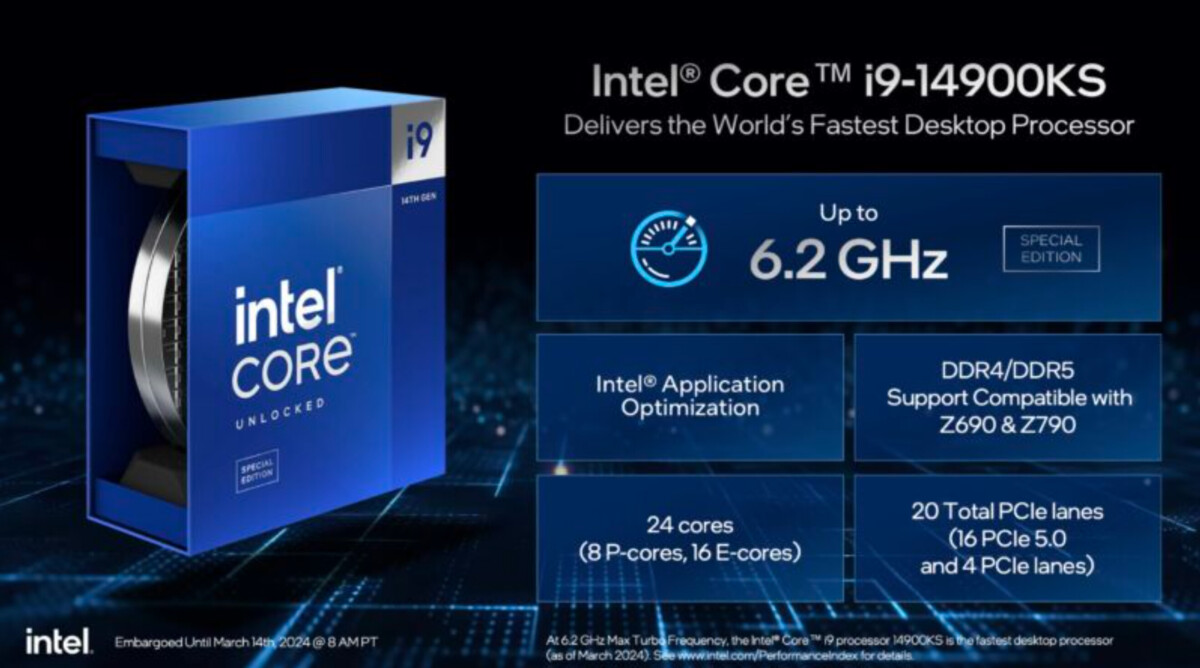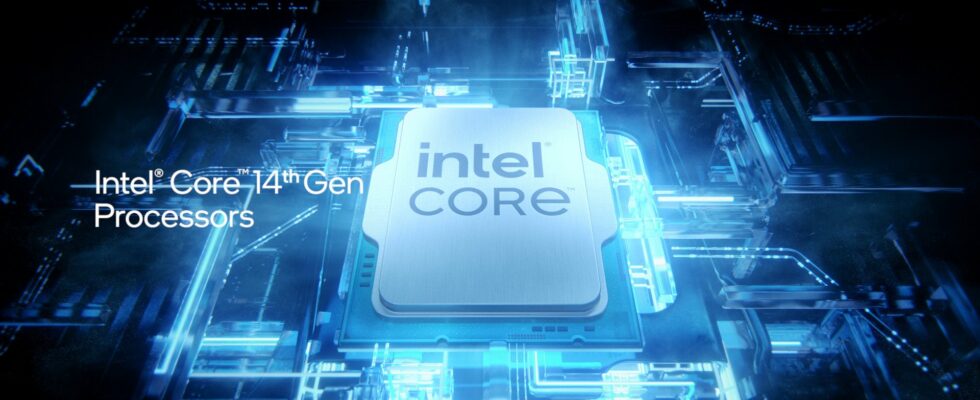Intel has launched the Core i9-14900KS, its new spearhead in the mainstream desktop processor market. Clocked at 6.2 GHz and launched at nearly 850 euros in France, the chip however seems to do too much for not enough.
24 cores, 253 W TDP, 6.2 GHz on the clock, and a price just as breathtaking as this frequency: almost 850 euros in France. A sum to which it will be necessary to add the price of an adequate dissipation system, strong enough to avoid overheating as much as possible… on a processor which does everything to achieve this, the Core i9-14900KS, the new chip from Intel which interests us today.
With this superlative consumer desktop processor, Intel takes a step forward compared to its previous generations of Core i9 “KS”, by boosting the maximum clock rate of its high-performance cores by an additional 200 MHz… to the point of playing with fire and remind us of the end of the 90s, when processor manufacturers were engaged in an endless (and surely a little absurd) race to megahertz.
To hell with sobriety!
As ArsTechnica points out, Intel is once again leveraging its technology Adaptive Boost to allow its Core i9-14900KS to increase its performance and energy consumption until reaching a maximum temperature of 100 degrees. With its new processor, the firm also manages to go up to 6.2 GHz, compared to a maximum of 6.0 GHz on the Core i9-13900KS and Core i9-12900KS, but without changing architecture or engraving fineness (10 nm always).

A small feat in itself, even if this new maximum frequency is very impractical in practice: energy consumption and heating increase for a performance gain which remains a priori modest compared to the “classic” Core i9-14900K.
According to the first independent tests conducted by Tom’s Hardware, the Core i9-14900KS consumes, for example, 31% more energy than the Core i9-14900K… for a gain of around 1% in rendering performance on the benchmark. Blender. An example, certainly, but one that raises questions about the relevance of such a chip.
